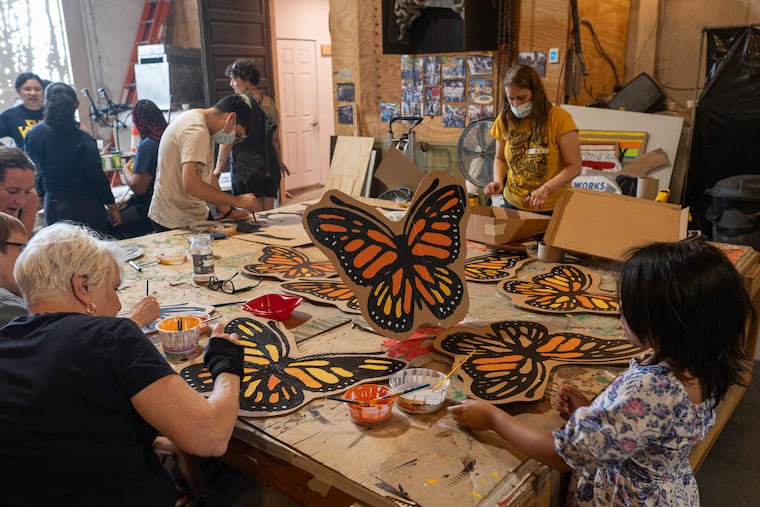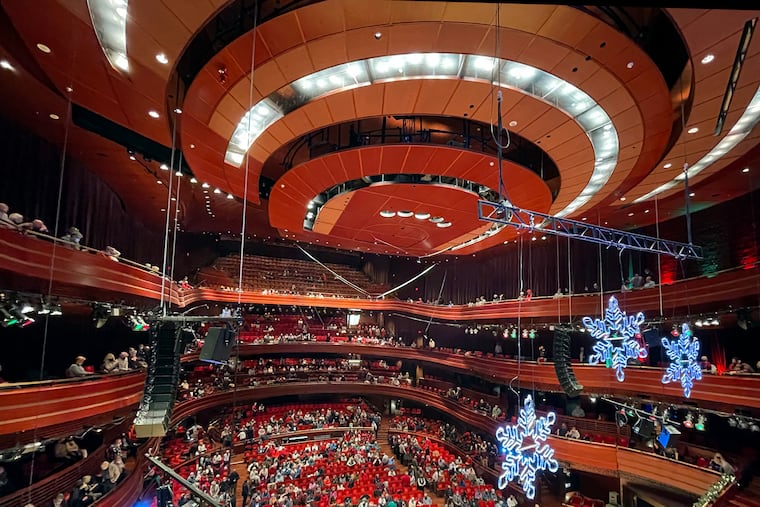Monarch Butterflies and Community Messages Highlight Joy at Anti-ICE Art Workshop with Governor Josh Shapiro.
In response to the recent uptick in anti-immigration sentiment and policies from the White House, many Americans, including long-time activists, have mobilized against the U.S. Immigration and Customs Enforcement (ICE). Susan Jekarl, an artist and lifelong advocate who recently returned to Philadelphia, expressed surprise at the diverse demographics present at these protests. Many participants were experiencing activism for the first time, signaling a shift in public engagement around immigration issues.
Recent demonstrations have attracted millions across the U.S. as a testament to growing public opposition against stringent immigration policies. Jekarl highlighted the collaborative efforts of various organizations and the dedication of thousands of volunteers in making these protests possible. On a recent Saturday, artists gathered in West Philadelphia at the arts nonprofit Spiral Q to create impactful works of art aimed at challenging current immigration enforcement practices and policies.
Philadelphia is recognized as a “welcoming city,” reflecting a local government stance that discourages collaboration with federal immigration enforcement. Despite nationwide support for deportations, with two-thirds of Americans in favor, a recent Gallup survey indicates a declining concern over immigration issues. Notably, 79% of respondents now acknowledge the positive contributions of immigration to the country.
Jasmine Rivera, executive director of the Pennsylvania Immigration Coalition and an event organizer, underscored the importance of Philadelphia’s multicultural landscape, where approximately 15% of residents are foreign-born. Rivera indicated that neighborhoods revitalized by immigrants serve as clear markers of economic and cultural enrichment within the city.
During the workshop, the centerpiece featured painted cardboard cutouts of the monarch butterfly, a symbol of immigration due to its migratory journey between Mexico and Canada. Banners with messages urging protections against ICE actions were also crafted, reflecting the anxiety surrounding potential government overreach, particularly after ICE was allocated significant funding under former President Trump’s administration.
While Pennsylvania’s Governor Josh Shapiro has been critical of Trump’s immigration policies, his administration maintains that the state does not classify as a “sanctuary state.” Mayor Cherelle L. Parker has defended Philadelphia’s long-standing sanctuary policies, yet critics, such as Tammy Murphy of Make the Road Pennsylvania, argue that both the mayor and the governor have remained relatively silent on pressing immigration issues. Advocacy groups continue to call for more vocal opposition to ICE’s operations and push for protective measures concerning immigrant communities. The momentum of this advocacy suggests that immigration reform and community protection will remain at the forefront of public discourse and activism in Philadelphia and beyond.
As immigrant advocacy organizations step up their efforts and public sentiments shift, it remains crucial for local leaders to address these pressing concerns transparently, ensuring that the voices of affected communities are heard and represented.







